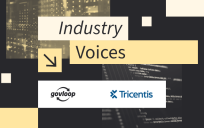In today’s IT environment, the management and operations of infrastructure can be soul-crushing work.
The problem is that the traditional data center continues to evolve. First, agencies moved into a hybrid IT environment, with a mix of on-premises and public cloud solutions. Now, a growing number of agencies are going cloud-native, adopting microservices, containerization and serverless applications.
Given this dynamic environment, the IT team can easily get overwhelmed. While the IT environment has continued to expand with new technologies, the IT team has not.
“You really have to automate in order to operate at that scale, to be able to accomplish the work you need to do,” said Abby Kearns, Chief Technology Officer for Puppet, whose solutions bring a DevOps-like approach to infrastructure automation.
The goal, she said, is to automate the rote activities and processes involved in infrastructure operations and management that are essential but that do not require critical thinking.
In an interview with GovLoop, Kearns discussed some of the key benefits of infrastructure automation.
Intelligent Compliance Enforcement
IT teams that rely on a manual, checklist-based approach to enforce compliance with regulatory, security and internal policies will get overwhelmed as their agencies move into a cloud-native environment, given both its complexity and scale.
That is why compliance enforcement is one of the best use cases for infrastructure automation, Kearns said. With the right platform, agencies can verify and enforce compliance in real time as the environment evolves – both improving compliance enforcement and relieving the IT team of countless hours of work.
Security at Scale
From a security perspective, a traditional IT environment is relatively simple, involving a limited number of applications running on a limited number of servers. A cloud-native environment, which can involve hundreds of thousands of containerized applications, poses a much greater challenge.
Agencies need to ensure that they have continuous visibility into the environment, with the ability to apply security in real-time as the infrastructure evolves and grows, Kearns said.
Agencies also should look for a platform that supports key standards and frameworks, such as the security and privacy controls cataloged in NIST Special Publication 800-53 or in the Defense Department’s Security Technical Implementation Guides (STIGs).
Automation as a Journey
To be successful, agencies need an automation platform that fits into their existing workflows and systems, rather than forcing the staff to adopt a whole new set of tools, technologies and protocols, Kearns said.
That means it should integrate with the cloud platforms, operating systems and network resources that make up today’s common hybrid infrastructure. It should also provide dashboards, collaboration tools and other capabilities that agencies can adapt to support and strengthen their existing processes.
Finally, the platform should enable agencies to learn as they go. Automation is not an end-state but a discipline, and an agency’s strategy should evolve as its needs evolve.
“This remains part of our core vision at Puppet: How do we integrate well with the work you do today, and then scale with that journey over time?” Kearns said.
This article is an excerpt from GovLoop’s recent guide, “Looking Forward: 5 Tech Trends Shaping 2021.” Download the full guide here.






Leave a Reply
You must be logged in to post a comment.